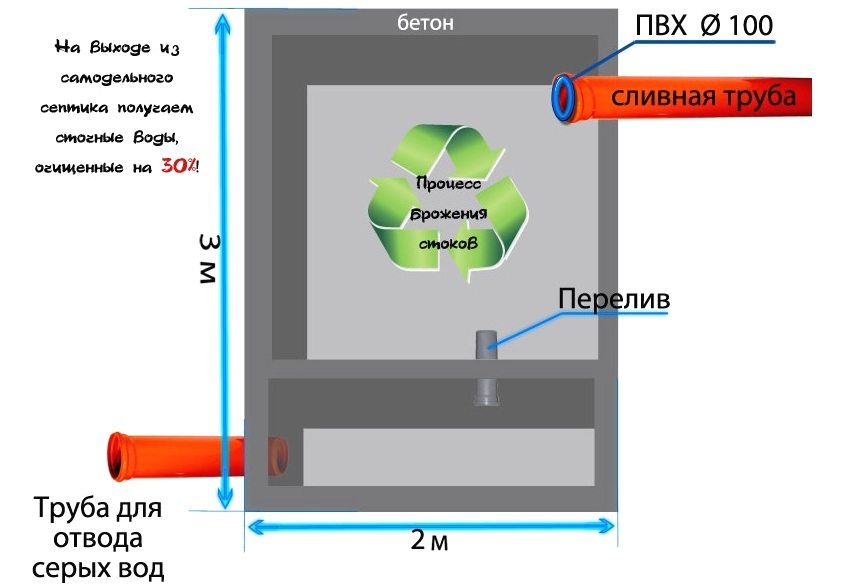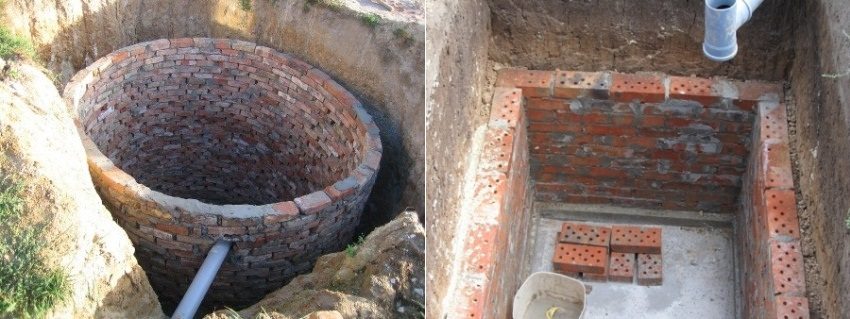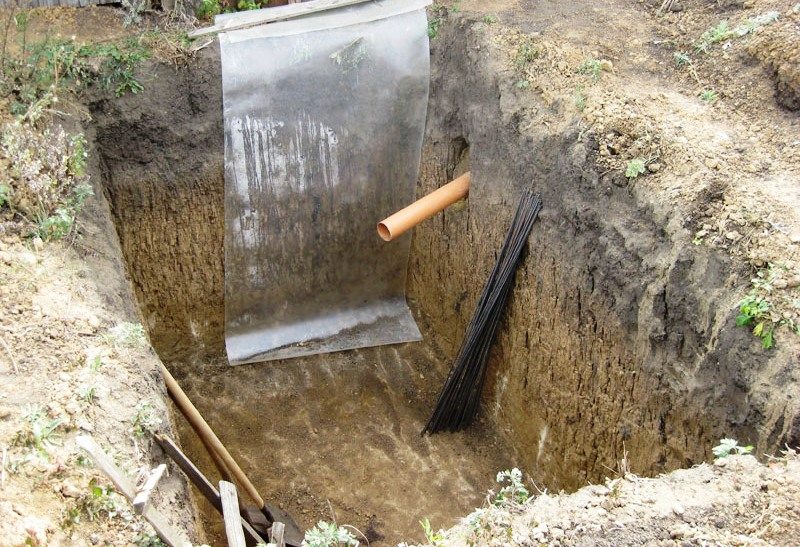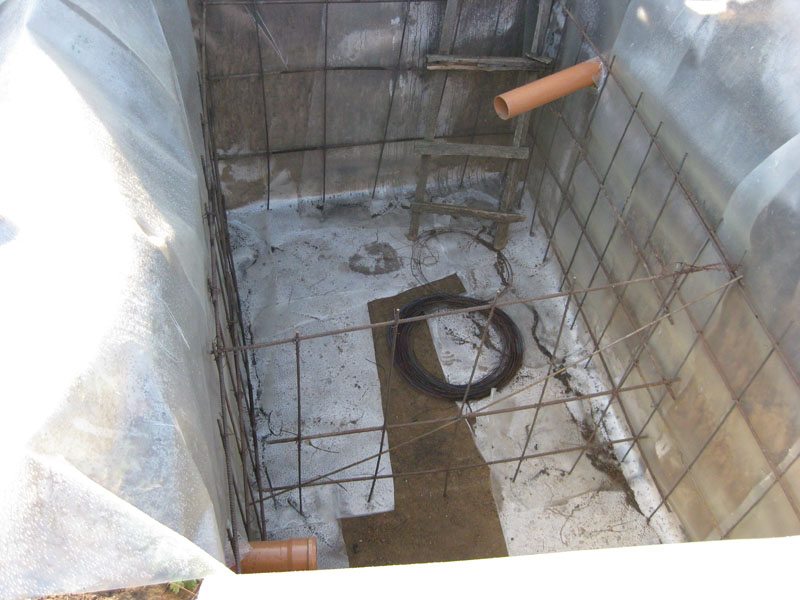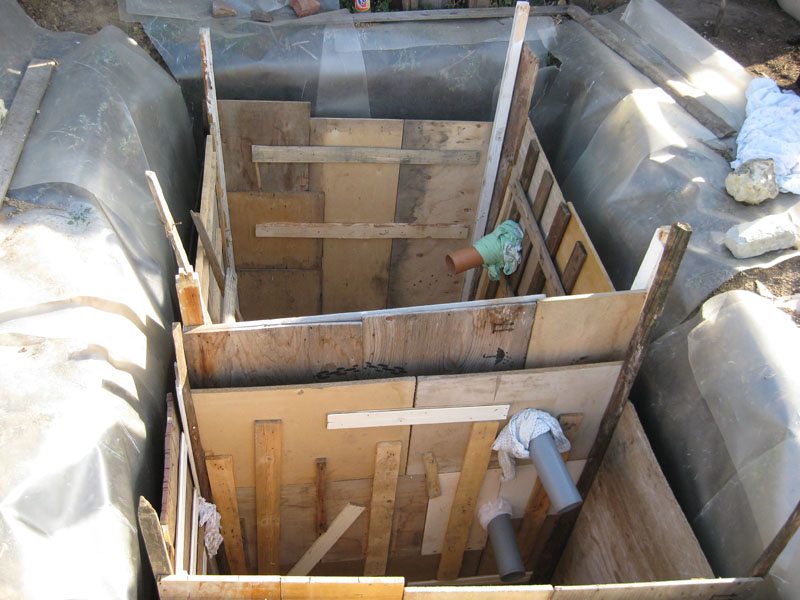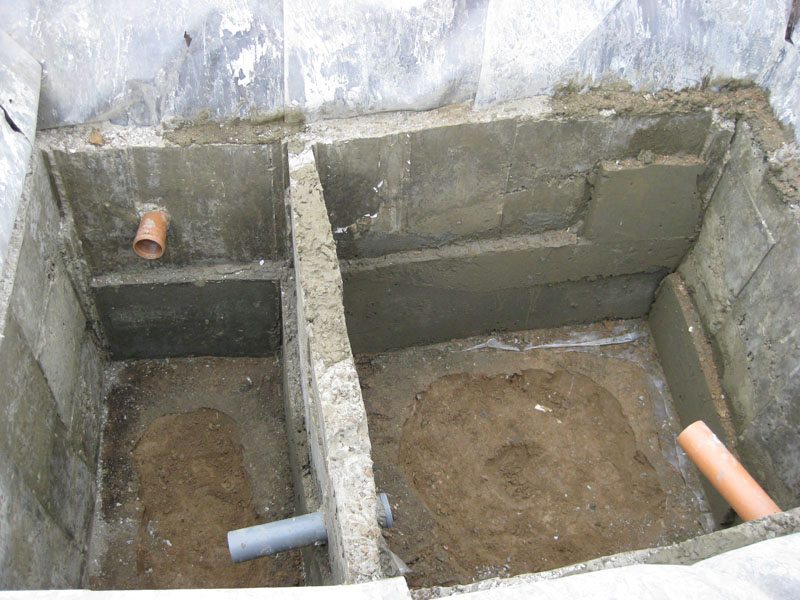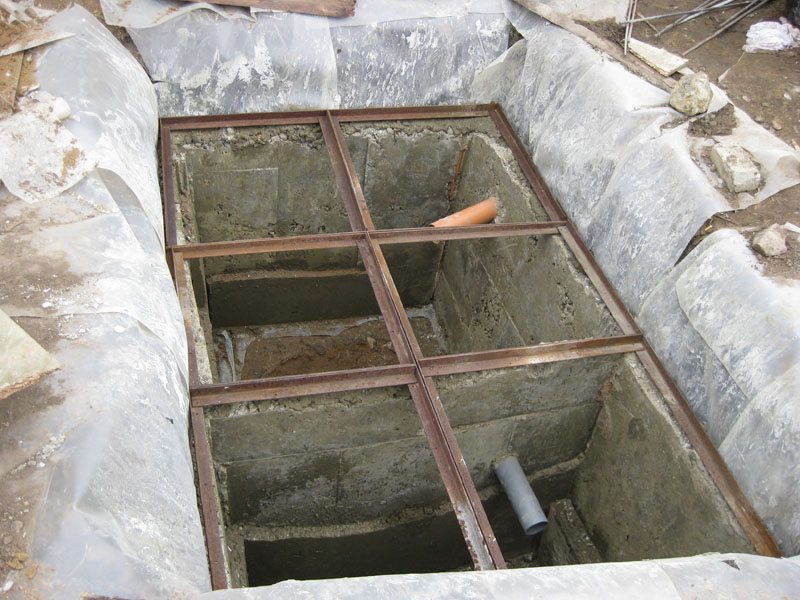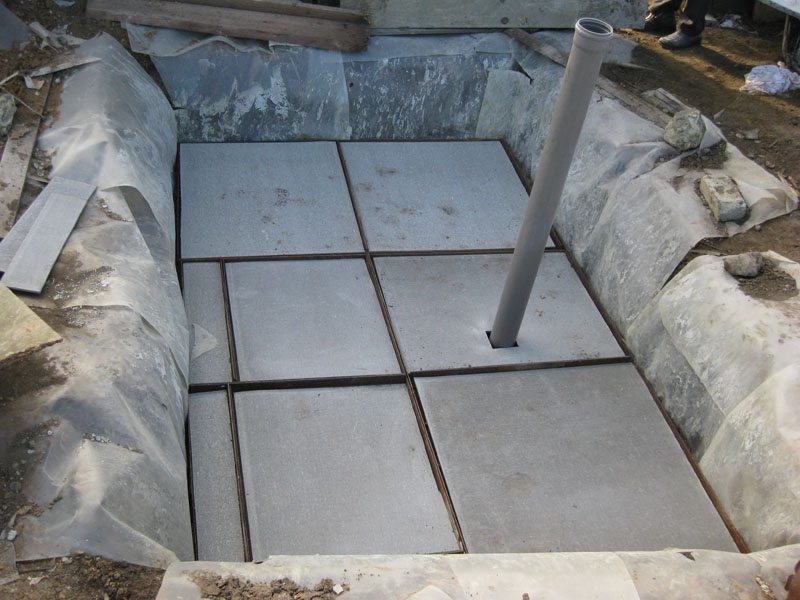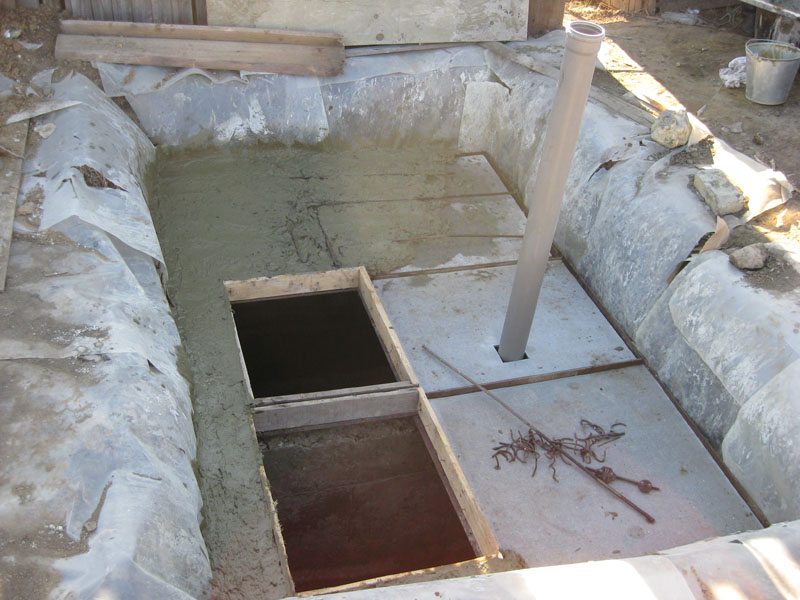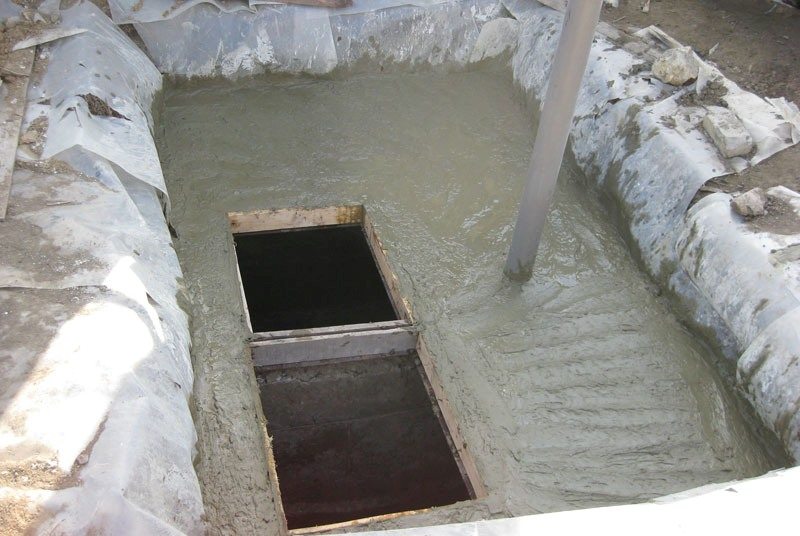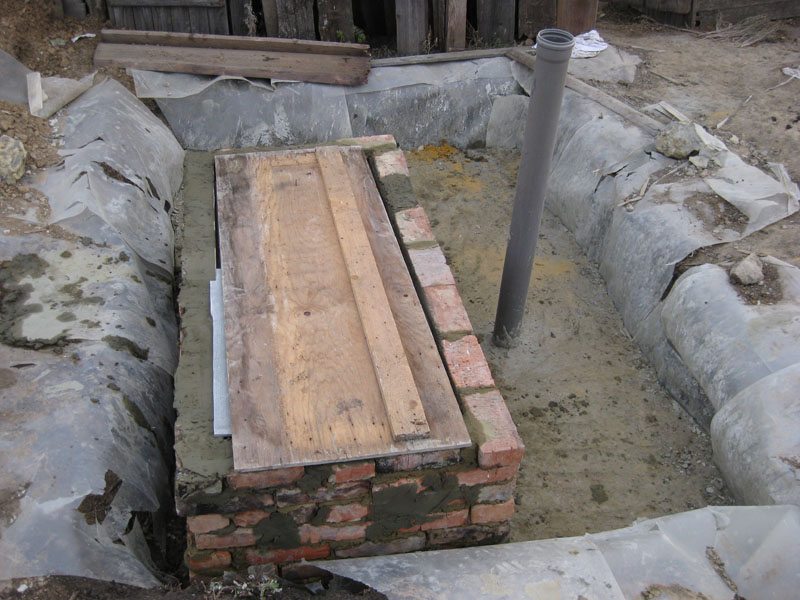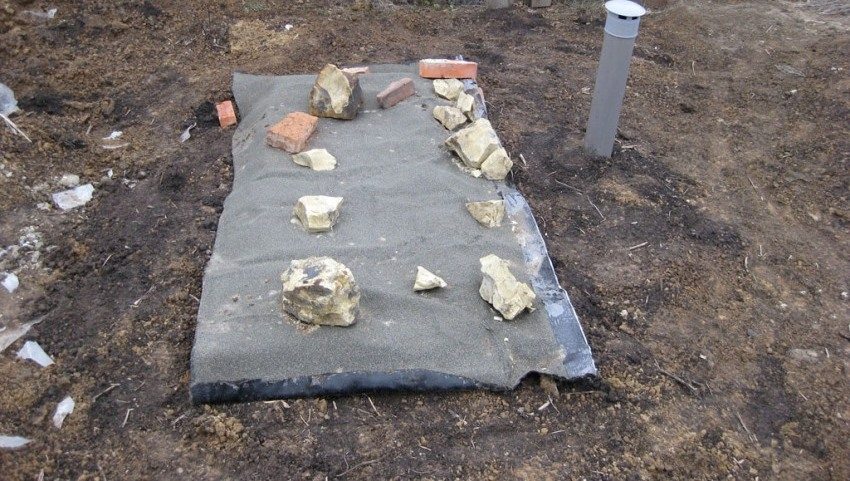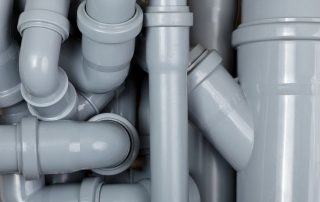The need to build a septic tank with your own hands for a private house may arise if your site is not equipped with a sewage system. The old way of removing sewage by accumulating it in a container requires constant maintenance, which consists in expensive pumping out using a sewage machine. The problem can be successfully solved by installing a septic tank, which can work for years without outside interference. To modern septic tank served "forever", requires competent calculations and installation.
Content [Hide]
DIY septic tank for a private house
All septic tanks known today are usually classified according to the principle of their functioning:
- the accumulative mode of operation assumes the presence of a completely sealed container, closed on all sides, which is dug into the ground. It includes drain pipes from the domestic sewage system, and on top there is an ordinary pipe or hatch for periodic pumping of sewage;
Related article:
Waste pit pump with grinder: design and function. Types of pumping equipment for household needs. Scope of use, modifications, device, functions.
- septic tanks, in which there is additional soil post-treatment, are in fact multi-chamber structures. All chambers are buried in the ground and connected to each other by overflow walls or pipes. In this case, the last container is not tight. In each container, water settles, and in the latter it goes into the ground in a form more or less cleaned of contamination;
- treatment plants can produce very deep wastewater treatment. It is customary to install them in those areas where it is forbidden to discharge poorly purified water into the natural environment.
Diy septic tank installation scheme for a private house requires a completely correct determination of the location of its installation. In this case, the depth of the waters underground is taken into account.
Useful advice! The septic tank must be dug in "downstream" than the house itself, as well as outbuildings with a well. In accordance with generally accepted sanitary standards, it is not allowed to place it closer than 15 m from any open water bodies, from a water intake well, and even closer than 50 m. The distance between the septic tank and the neighbor's fence is more than 2 meters.
Work order
When installing a treatment plant, a certain procedure must be followed:
- First, according to the above rules, we determine the place for the installation of a septic tank.
- At the second stage, we dig a pit of the required size.
- Preparing the formwork.
- We carry out the pouring of concrete solution (or we build septic tank made of concrete rings).
- We make the device of an internal partition.
- We install a cover on the septic tank.
Let's consider all this in stages.
Performing work with soil
Digging a pit is the initial stage of construction of any septic tank... If everything is organized and calculated correctly, then its volume can be the smallest. The main thing is that there is enough space near the walls for the convenience of installing the container. The optimal volume for a private house is the volume formed by an eight-cube pit 2x2x2 m. Some of its increase will not be able to damage efficiency if it is possible to hire earth-moving equipment.
Exposing the formwork
After the required depth of the hole has been completely dug, it is necessary to install the formwork, for which it becomes necessary to have a certain amount: osb sheets, timber, PVC sewer pipe scraps. It is required to make holes in the formwork that will provide excellent drainage of water into the ground. This is what plastic pipes are required for.
Round holes are made in osb sheets at a distance of 30 cm from each other. Since osb is too flexible material with low rigidity, it needs to be strengthened a little. For this purpose, 20x30 or 30x40mm bars are attached along the entire perimeter of the sheet using ordinary self-tapping screws. The vertical stiffeners are fixed every 50 cm. Such sheets will need to be made for at least half of the entire pit.
In order for the prepared formwork not to fall apart under the influence of heavy concrete mortar, you need to wedge it with some kind of timber right in the pit. Plastic sleeves made of pipe scraps are inserted into the holes prepared for them, so that they sink about 5 cm into the ground.Otherwise, the concrete can squeeze them out and spill through the holes.
Useful advice! It is better and more profitable to make the formwork collapsible, so that the boards can be rearranged from wall to wall. In this case, everything should be removed separately, both the adjacent walls and the wall itself should be divided into two independent parts.
Concreting a septic tank
When the preliminary preparations for the construction of a septic tank for a private house with your own hands are completed, then you can already start pouring concrete solution. The best way to do this is to rent or purchase a concrete mixer. To prepare liquid concrete you will need:
- fine sand (2 parts);
- fine-grained detrital crushed stone (2 parts);
- cement in bags (1 part).
All this must be filled with water and mixed thoroughly. Among other things, fittings will also be needed. Thanks to these rods, the cement turns into strong reinforced concrete. If there are no rods, then any other metal at hand can be used, but not pipes. After the first half of the pit is filled in, you need to wait about 2 days until the whole mass is dry. Then the formwork is rearranged on the other two sides and the whole procedure is repeated again.
Construction of a partition in a tank
After the walls have been erected, we proceed to dividing the entire volume of the septic tank into two parts. It is important that there should not be holes in the walls in the first compartment, they must all be in the second container. This point must be taken into account even at the stage of mounting the formwork panels.
The wall can be poured out of concrete or made of brick. She should divide the entire pit into two approximately equal pits. In the first, sludge and solid impurities will settle, which can very quickly clog the pores in the soil.The other part of the container will be filled with relatively liquid water, which enters there through the top of the wall and goes through the holes into the soil, where it is filtered.
Useful advice! It is very important that the height of the wall overflow is correct. Namely, it should be 40 cm below the level of the pipe leaving the house. There is a minimal amount of silt here.
How to increase the current performance and standard life of a septic tank
When a septic tank for a private house is installed with your own hands, you do not need to start operating it right away. To prevent the bottom of the second section from silting up quickly, pits are punched to a depth of 2 m in it with the help of sharpened pipe sections, called bailers. They can also be drilled with a drill. The holes are covered with a mesh, onto which rubble is then poured. The resulting drainage drains water very well and prevents soil from being washed out, which significantly increases the service life of the septic tank.
An important factor affecting the overall performance of a septic tank is the presence of ventilation. It is not difficult to make it. After all, for this it is enough to apply sewer pipe, which is simply brought to the surface. You can close the septic tank from above with anything: with a sheet of iron, a concrete slab, or you can pour concrete yourself.
For this, beams are made from a channel, on which thick boards treated with tar are laid. A small hatch is left in order to sometimes rake out solid waste. The rest of the area, previously covered with roofing material, is poured with concrete, not forgetting to arrange reinforcement.
Basic rules for using a homemade septic tank
Having installed a septic tank for a private house with your own hands, you must follow important rules when using it:
- construction waste should not be dumped into it or into the sewer;
- you can not use the sewer system in order to dispose of polymer materials, cellophane bags, cigarette butts, sanitary napkins. These items cannot be fully processed by aerobic bacteria;
- you can not use synthetic detergents, bleaches and various caustic chemicals if cleaning in your septic tank is carried out using microorganisms;
- you can discard toilet paper, as it dissolves well in the aquatic environment.
Correct construction and operation of a septic tank will extend the service life very significantly. And if from time to time you use modern biological-based preparations that decompose solid impurities, then it is possible to completely avoid cleaning for a very long time.

